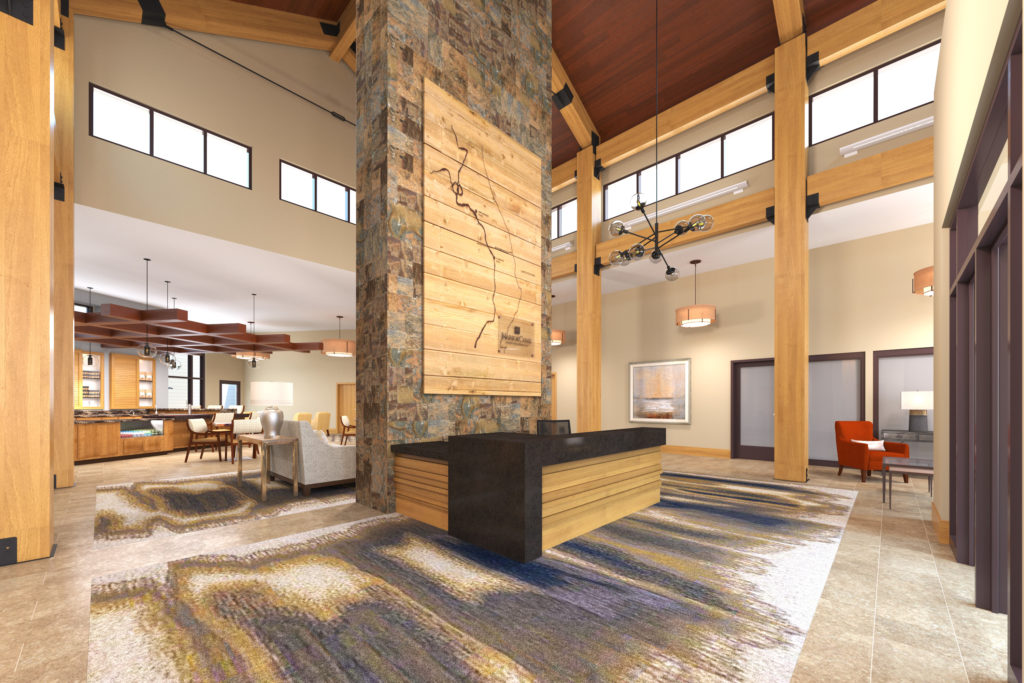While some areas of the country may be overbuilt, there continues to be seniors housing demand in a number of primary and secondary markets. Yet, even in these localities, it’s essential for developers to be selective in where they pursue projects, as there can be both areas of opportunity and some that are not positioned to support a senior living community.
For instance, the Milwaukee Metropolitan Statistical Area (MSA) is providing ample opportunities for senior living developers in Wisconsin. But data reveals there’s more to the greater Milwaukee area than meets the eye.
Sizing up the market
In the Milwaukee MS there are four main counties — Milwaukee County, Washington County, Waukesha County, Ozaukee County — and all four have areas where the conditions are ripe for senior living development.
Senior care and living services company Plante Moran Living Forward examined the demographics based on ZIP codes within those four counties to identify development opportunities, says Jamie Timoteo, manager at Plante Moran Living Forward.
“If you move out west to Waukesha County, the competition goes down significantly compared to along the coast in Milwaukee County,” Timoteo says. “But west and northwest of the city are where the more affluent areas are as well.”
While not every place in the MSA makes sense for development, the overall demographics are favorable.
In the Milwaukee MSA, the number of households aged 75 and older earning $35,000 and more is projected to grow 10.1% from now to the year 2020, Plante Moran Living Forward data show. The information is sourced from The Nielsen Company. In addition, the 65 and older population is expected to grow 15.7%, to 255,000, by 2020.
“We know that in this industry seniors typically move into a senior living facility that is within 10 miles of their existing residence,” Timoteo says. “And another feature that draws seniors to a specific location are their adult children. The reason seniors move near their adult children is to be closer to them as well as often times the adult children will pay for some or all of the cost associated with the community the senior moves into.”
Affluent households with adult children also are on the upswing in the greater Milwaukee area. Among households aged 45 to 64, the number of those earning $75,000 and more is projected to grow by 5.1% between now and 2020.
Seizing opportunity
Senior living operator and developer Harbor Retirement Associates LLC is one of those companies that sees great opportunity in The Badger State. The Vero Beach, Fla.-based company is opening a new assisted living and memory care community in Shorewood, a suburb less than 5 miles north of downtown Milwaukee.
HarborChase of Shorewood (pictured) will feature 59 assisted living units and 35 memory care units on a 3.2-acre site and is expected to be completed by September 2015. This is the company’s first development in Wisconsin.
“We see assisted living as a community-based solution,” says Charlie Jennings, chief development officer at Harbor Retirement Associates, noting that those who need assisted living care typically choose a community close to their children and grandchildren. “Within a five mile radius of a development is where we typically draw 75% of our residents.”
Harbor Retirement Associates has 20 communities across five states, with projects in the pipeline across five additional states, including Wisconsin.
“There are some areas of Milwaukee served pretty well,” Jennings says. “And in other cases, like in Shorewood, there aren’t many options for seniors. Residents of Shorewood would need to move away from the community into Milwaukee proper for senior housing care. We see an opportunity to serve the aging population there, who have lived there for decades and built businesses and raised families there.”
Strong occupancy
Milwaukee-based Direct Supply Aptura, a senior living development services firm, has also noticed increasing development in its own backyard. Direct Supply Aptura is also a member of the project team for HarborChase of Shorewood.
“We are seeing a lot of activity in the Milwaukee area,” says Gaurie Rodman, director of development services at Direct Supply Aptura. “We have a robust senior population with good incomes in Milwaukee and the suburbs. Development is starting to address the market demand—specifically assisted living with higher acuity and memory care.”
Communities in Milwaukee MSA are recognizing the value in welcoming senior housing development, Rodman says, noting many seniors’ preference to age in areas where they have roots.
Senior housing development also opens the door for younger families to move in, likely buying homes from those seniors moving into senior care.
And the investment developers are making is paying off, Plante Moran Living Forward data show.
“Another indicator we have seen that is pretty positive is occupancy,” Timoteo says, noting that occupancy has been trending up since the second quarter of 2013. “It bottomed out at 87.3% but since then it has been trending up with no dips, and now it’s at 93.7%. That is higher than the average market area occupancy of the top secondary market MSA’s, which is 91.7%.”
A further notable trend is that absorption has been outweighing new inventory, he says, citing data from the National Investment Center for Seniors Housing & Care (NIC).
“It’s an interesting market,” he says, adding that the amount of construction for independent and assisted living is on par with industry averages. “That is impressive, given the amount of construction going on across the country.”
Written by Cassandra Dowell
Companies featured in this article:
Direct Supply Aptura, Harbor Retirement Associates, Plante Moran Living Forward


